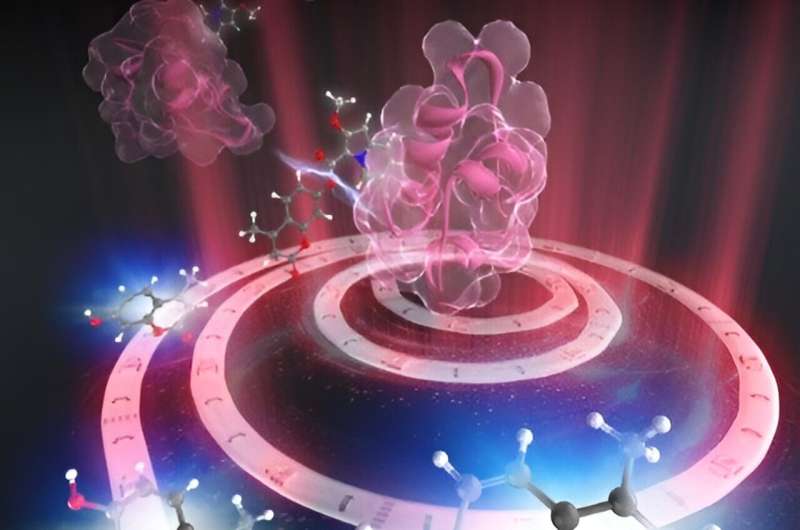This article has been reviewed according to Science X's editorial process and policies. Editors have highlighted the following attributes while ensuring the content's credibility:
fact-checked
peer-reviewed publication
trusted source
proofread
Light-activated antitumor drug could inspire new cancer treatments that have minimal side effects

RIKEN chemists have demonstrated a gold-nanocluster system that carries two components of a drug in a controlled ratio for maximum cancer-cell killing effect. The active drug remains safely masked until red light triggers its release, minimizing collateral damage to healthy cells near the tumor. The study is published in Chemical Science.
One promising way for treating cancer is to use light to activate anticancer drugs inside tumors in the body, says Kenji Watanabe of the RIKEN Center for Biosystems Dynamics Research. This should reduce unwanted side effects since the light is shone only on the tumor, sparing healthy cells in the vicinity.
Watanabe and his co-workers have been developing potential anticancer drugs masked by chemical groups called indolizines. When exposed to red light in the presence of a second molecule called a photosensitizer, the indolizine breaks down to release the active drug.
However, when the team first tested the concept in cells, the relatively low concentrations of the indolizine and photosensitizer components in each cell made it difficult to efficiently trigger the release of the drug using light.
"We therefore sought a carrier system to bring these two components together," says Watanabe. "That led us to explore gold nanoclusters."
The team planned to use dedicated chemical connecting groups to attach the indolizine and photosensitizer components to the surfaces of the gold nanoclusters.
They had to overcome two challenges, however. Conventional synthesis methods generate gold nanoclusters with an uncontrolled mixture of the two connecting groups across their surface, skewing the ratio of the two components they carry. They also involve relatively harsh conditions that can be damaging to one of the connecting groups.
The team overcame both challenges by combining the two chemical connecting groups in a single chemical entity, and then developing a mild method for attaching it to the surfaces of gold nanoclusters. "This strategy enabled us to realize a uniform distribution of both connecting groups on the particle surface," says Watanabe.
Once the indolizine-masked anticancer drug and the photosensitizer were attached, the resulting gold nanoclusters showed negligible toxicity to cells in the dark. "But upon irradiation with red light, the nanocluster showed significant toxicity against cancer cells," says Watanabe.
"This work provides a promising foundation for developing new anticancer therapeutics," he adds.
The team plans to extend the multifunctional character of the gold nanoclusters by adding targeting groups that selectively bind to cancer cells, thereby boosting nanocluster uptake into the tumor while minimizing uptake and associated side effects in healthy cells.
More information: Kenji Watanabe et al, Clickable bisreactive small gold nanoclusters for preparing multifunctionalized nanomaterials: application to photouncaging of an anticancer molecule, Chemical Science (2023). DOI: 10.1039/D3SC04365G
Journal information: Chemical Science
Provided by RIKEN



















